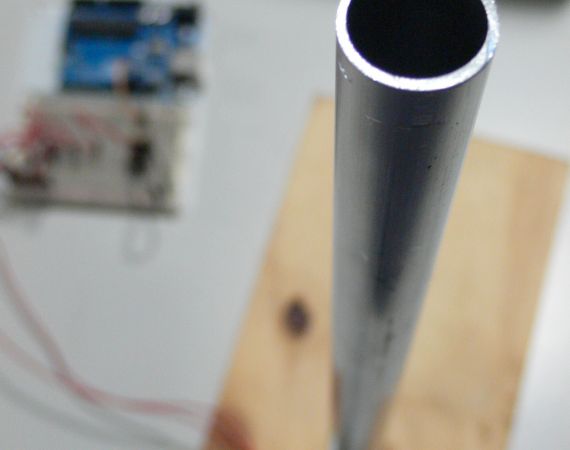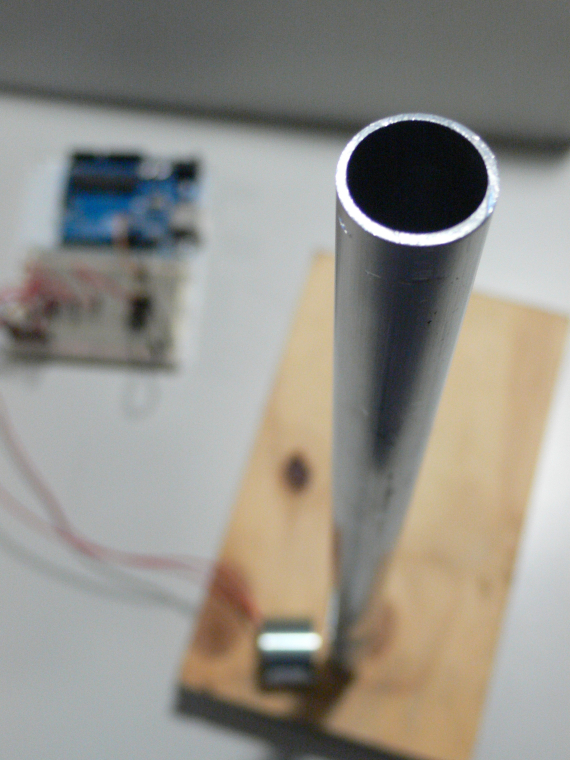Posted on Thu 26 May 2016
Swiss sirens, gold miners, and a solar chime of sorts
“A solar 'superstorm' is coming and we'll only get 30-minute warning”, said a press release on the 7th February from the Royal Academy of Engineering, after analysing the UK’s preparedness for a solar superstorm.

Posted by
Project

Communicating Science Residency
With media attention on solar flares and their effects on positive events (the northern lights) or predicted negative events (technological disruption), Helen White joined the Pervasive Media Studio in January 2013 to embark on a graduate and new talent residency, supported by IOP Publishing, to…“A solar 'superstorm' is coming and we'll only get 30-minute warning”, said a press release on the 7th February from the Royal Academy of Engineering, after analysing the UK’s preparedness for a solar superstorm.
They describe them as high impact, low probability events, likely to occur every 200 years, but without any real accuracy in that prediction. The largest event of its kind was the Carrington Event of 1859, that caused aurora around the world so bright that it awoke gold miners in the Rocky Mountains who thought it was morning and started making their breakfast. Nowadays in our world of high-tech communication systems reliant on our orbiting satellites, the effects would be somewhat more serious perhaps than the mild confusion experienced by this group of prospectors.
In a stroke of rather fortuitous timing the Swiss Sirenentest took place on the 6th of February, sounding the country’s 8,200 alarms that are designed to alert the population of possible threats, advising them to proceed inside and follow instructions from an emergency broadcast. I wonder if solar superstorms are on their list of natural hazards. The UK included them in our National Risk Assessment for the very first time in 2011.
Following my previous experiments with light and projection, this latest news has been pointing me back towards the sonification of my solar wind data. What could be learnt from it if we could hear it? Would our understanding of it become more instinctual?
“Sound is the temporal indicator of the ongoing physical presences of the world around us.” (From the Sonification Handbook – with thanks to Tom Mitchell)
It’s been a week or so of fascinating experimentation that began with research into resonance, which is brilliantly (and confusingly!) demonstrated here. And armed with some lengths of aluminium tubing, a couple of apps, one for tuning and one for tone generation, and a speaker, I managed to achieve a sustained ringing in the tube that resonated long after switching off the original tone. The next step was to replace the tone with an inaudible electromagnetic frequency that would produce the same ringing, which would be much more pleasant than a sharp burst of sound.

After further reading into nodes of vibration, where a tube vibrates the least, and anti-nodes, where it vibrates the most, and some much appreciated code-writing by Dan and Tarim, as well as some much appreciated lathe work (thanks Roger), I’ve ended the week with a working prototype of some sorts. And although not on the same scale as the Swiss national alarm test, I’m feeling very happy that the data could be used to produce an audible signal of some kind, and at the same time staying true to the magnetic qualities inherent in the solar wind.
On another note, no pun intended, some very useful research was carried out by Adam Nieman and Alex Burton on the general public’s knowledge about science, during the creation of their Space Signpost. They discovered during interviews that many people initially professed little or no interest in space, yet went on to say they often reflected on space when outside at night, suggesting that interest seemed to be triggered by direct experience rather than knowledge. This report also pointed me in the direction of a much older paper by the Royal Society entitled “The Public Understanding of Science” which I think sums up both my experience of the residency so far and what I am ultimately aiming to achieve:
“Just as one can listen to music without being a performer, one can enjoy the excitement of scientific discoveries without being a scientist”.
